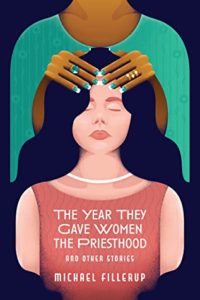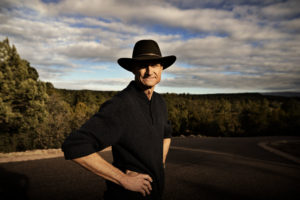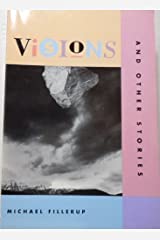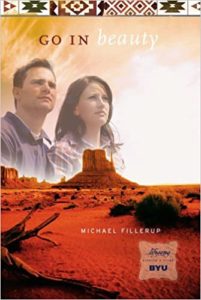 Michael Fillerup’s second collection of short stories, The Year They Gave Women the Priesthood and Other Stories, was recently published by Signature Books. In this post Michael gives an overview of the book and describes the evolution of the title story.
Michael Fillerup’s second collection of short stories, The Year They Gave Women the Priesthood and Other Stories, was recently published by Signature Books. In this post Michael gives an overview of the book and describes the evolution of the title story.
As Latter-day Saints, from birth we are taught to think, to believe, and even to feel a certain way about certain things. For instance, if someone loses a son in the mission field, we assume that his ticket has been punched to the celestial kingdom—he’s not only in a better place, he’s in the best place–so turn that frown upside down and rejoice! But what happens if you can’t flip the switch? What happens when anger, grief, and guilt gnaw so deeply and insidiously that you have to take action: someone’s going to pay. This is the basic plot of the story “In a Better Country” which appears in my new collection The Year They Gave Women the Priesthood and Other Stories (Signature Books, 2022). It also exemplifies one of the “shuttered landscapes” in Mormon culture where feel-good clichés falter and the faithful are scorched in the refiner’s fire.
One critic said my stories are like a journey “through hope and despair with a moment of genuine joy at the end.” I think “genuine” is the pivotal word, and as a writer I have to earn that. A trademark of my writing is emotional authenticity. I don’t pull punches, and I don’t sprinkle fairy dust. I may lead you through the labyrinth, but I won’t feed you to the Minotaur. In my stories, faith is a terrible gift, love is tough but fragile, and forgiveness is a perpetual work-in-progress. Ambiguity looks both ways before crossing the street but still gets hit by a bus, but it’s all good because redemption, in some form or another, is waiting just around the corner. But that, too, must be earned: trust. At the end you may emerge a bit startled and shaken but hopefully a little wiser. And smiling. Because I’m a comic at heart, and a romantic but a realist too.
I explore another shuttered landscape in the title story “The Year They Gave Women the Priesthood.” I wrote the first draft 40 years ago when my wife, Rebecca, and I were living on the Navajo Reservation. We had three daughters ages six, four, and one, and I had a full head of hair (now long gone). Initially, it was a nice little comic romp in which the priesthood was given to the women of the church and taken away from the men. There were some amusing (but predictable) moments–the bumbling dad burning the pancakes while his wife trots off to bishopric meeting–but the story never took off. So, I tossed it into a box I call “The Elephant’s Graveyard”—a stockpile of rough drafts and creative hunches–and forgot about it.
Forty years later, I needed one more story to round out the collection I was submitting to Signature Books. I ferreted through “The Elephant’s Graveyard” and the moment I read the title—“The Year They Gave Women the Priesthood”—I smiled. Yes. Now. The time was right, and I was ready—finally.
I say “finally” because in 1982 I wasn’t prepared to do justice to that story. However, over the next four decades, as my three little girls grew into young womanhood and then full adulthood, I would witness firsthand the double-standards, the condescending remarks, the dismissive behavior, and the sometimes subtle and other times shameless bias against my daughters and their female compatriots at school, at church, and in the workplace. To quote my oldest daughter, I had been “sufficiently schooled.”
I remember her sharing what she called her “most memorable lesson” during her tenure in the Young Women’s program. Her well-intentioned teacher told a story about a young woman who was studying to be a concert pianist. She was at a crossroads, weighing the level of time, commitment, and “single-mindedness” required to succeed in an extremely competitive profession against the obligations of marriage and family. She decided to set aside her artistic ambitions to get married in the temple and have children. The teacher lauded her for “making the right choice.” Meanwhile, my fourteen-year-old daughter (who would go on to earn a master’s degree in piano performance and a doctorate in Musicology) trudged out of the classroom as if she’d just been handed a death sentence. “Marriage?” she said to me. “Children? Can I at least graduate from high school before you totally crush my dreams?” Her use of the word you as if I were complicit in this aspiration-killing plot still troubles me, almost as much as what she said next: “Why does a woman have to make this choice but not a man?”
Throughout their adolescence, my three girls had always kept me on my toes, peppering me with questions: “Why do the Scouts get to go kayaking while we have to babysit for Relief Society homemaking meeting?” “Why can’t a woman give the closing prayer in sacrament meeting?” And, of course: “Why can’t we hold the Priesthood?” This one really bothered them. Some of their male peers got their jollies by torturing frogs over a campfire, yet they were deemed worthy of holding the holy priesthood. “Why them and not us?” In their eyes, priesthood eligibility had little to do with merit, as long as you were a male and you weren’t a practicing felon.
The concept of priesthood privilege—who can and who cannot officially wield the authority of God on earth—continues to baffle me. While I have known many exemplary men who faithfully honor and magnify their priesthood callings, I have known just as many (myself included) who take this extraordinary honor for granted; we become casual and apathetic. We groan about the many meetings and roll our eyes at the constant reminders to do our ministering, go to the temple, be a missionary, and cheerfully load another moving van. Too often we regard priesthood as a burden rather than a sacred responsibility (which is easy to do when you get that 3:00 AM phone call from Sister Henderson requesting a blessing to alleviate her bunion pain.).
With these and other thoughts in my head, I re-read the original draft and began scribbling anew. The first 20 pages flowed along smoothly and predictably, with echoes from Elouise Bell’s outstanding story “The Meeting” (Dialogue, 1981) humming in the background. But then something quite unexpected happened. Frank O’Connor once said that a writer’s greatest delight is when a character stands up mid-story and proclaims, “I’m not going to do that! I’m going to do this!” In this instance, it wasn’t a particular character that rebelled but the story itself: “Nope! Not going there! We’re going here!” When I protested—“No, no—let’s stay the course! That wasn’t the plan!”—the story fired back: “No! We haven’t come this far just for that! We’re going for the jugular here!” Or, in today’s vernacular, “Go big or go home!” The result was a substantially longer, more thought-provoking, and more blushingly candid reimagining of the original. The humor is still there, but the knife cuts deeper. It’s a story that will linger for many days after the initial reading.
I never begin a story intending to make some lofty moral or political statement. My primary objective is always to tell a good story, and to me that means a journey of discovery. After the fact, if I root around a little, I can usually find some redeeming social or theological value in my work. In this story, my modest hope is that it will help drive a stake into the heart of the last vestiges of Mormon male chauvinism in the Twenty-first century. And if it lights a fire under some priesthood slackers, that would be good too.
 Michael Fillerup is the author of numerous short stories, a short story collection (Visions and Other Stories), two novels (Beyond the River and Go in Beauty), and co-author of a third novel (Just a Teacher). He has also written children’s books and published several articles on indigenous language preservation. He has won AML Awards for short fiction in 1986 and 1991. The founder and former director of Puente de Hozho Tri-lingual Magnet School, Fillerup lives with his wife, Rebecca, in northern Arizona.
Michael Fillerup is the author of numerous short stories, a short story collection (Visions and Other Stories), two novels (Beyond the River and Go in Beauty), and co-author of a third novel (Just a Teacher). He has also written children’s books and published several articles on indigenous language preservation. He has won AML Awards for short fiction in 1986 and 1991. The founder and former director of Puente de Hozho Tri-lingual Magnet School, Fillerup lives with his wife, Rebecca, in northern Arizona.




